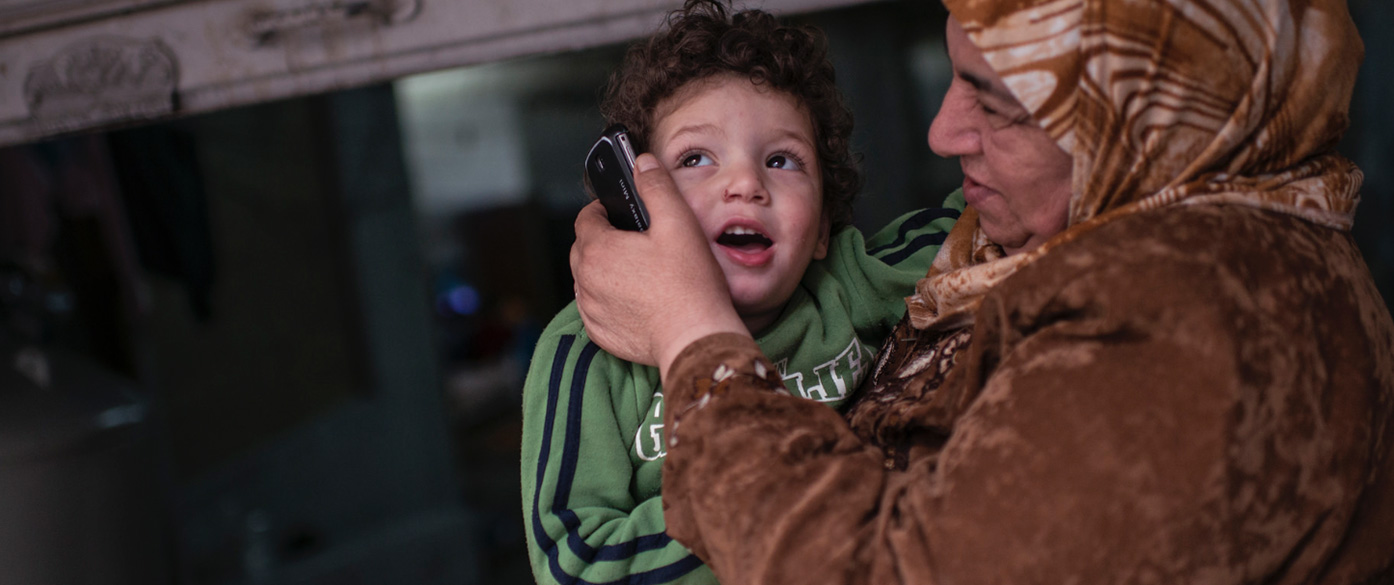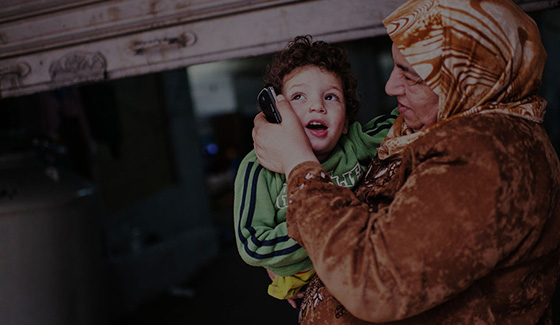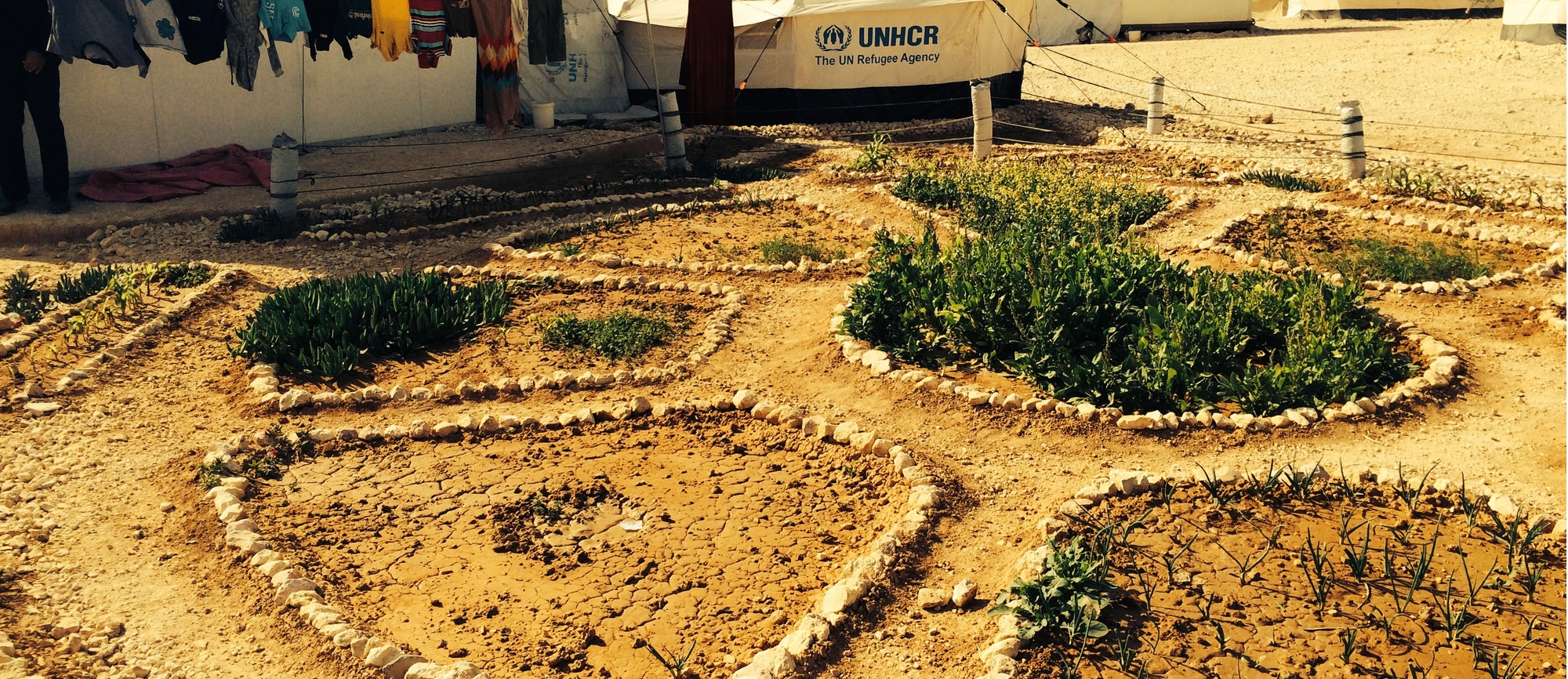1. Define challenges
Finding the right SMS solution without a huge investment
In any situation, refugees must call on incredible strength and resourcefulness to succeed in new and ambiguous environments. But in an unfamiliar city especially, refugees often struggle to survive in a context they are not used to, and where finding a job is paramount.
Communicating with refugees in urban settings can be one of the greatest challenges. Local organizations that want to help are often stymied by how to contact people with information and assistance. Refugees change locations and phone numbers often, making it hard to stay in touch. For their part, refugees are often unaware of how to contact UNHCR or other organizations that want to help.
In San Jose, Costa Rica for example, a local organization had trouble notifying refugees about opportunities like computer training and language classes that could help them integrate into the community and boost their livelihoods.
And an organization that gives out microcredit loans needed to stay in touch with refugee entrepreneurs but wasn’t always able to contact them to see if they needed more assistance or funding.
We thought we could find a way for refugees and organizations to stay connected. SMS messaging would allow organizations to send texts and refugees could respond.
But no one wanted to invest time and resources in developing and disseminating an SMS solution that might not be the right fit for urban refugees.
2. Identify solutions
Failing fast with an "off-the-shelf" solution
Instead of spending a lot of time developing a new prototype, we took a different approach. We decided to “fail fast.” We would amplify a solution that was already available and then test it to see if it worked in the context it was needed for.
With collaboration from UNHCR, Stanford University created a class called “Rethinking Refugee Communities,” and students taking the class created an initiative named Ascend to find better ways to communicate with refugees in urban settings.
What they found was FrontlineCloud, an “off-the-shelf” solution that would easily let the team answer important questions about how to use text messages to reach refugees—without investing vast amounts of time and resources into building a unique system.
FrontlineCloud is an inexpensive online platform that allows organizations to send mass messages and surveys and retain a digital record of refugee responses in both emergency and protracted refugee situations, anywhere in the world.
Using an SMS system to assess refugees’ needs, provide targeted assistance and also maintain two-way communication would save time, money and manpower. And it would give refugees timely information that could help them find opportunities.
3. Test solutions
Understanding local needs for SMS communication
Initial testing in Esmeraldas, Ecuador informed the launch of a more expansive pilot that was rolled out by our Link Lab, this time in San Jose, Costa Rica. The city was chosen in part because refugees there have high levels of both literacy and mobile phone usage, and because Costa Rica offered a relatively stable environment for refugees. Prioritizing an SMS pilot here would not come at the expense of more urgent needs.
Through a few key interviews and focus group discussions with refugees, local organizations and staff at UNHCR’s Costa Rica operation, our Link Lab got a sense of where an SMS system could really help.
Refugees in San Jose said they wanted more information on activities and opportunities. And some thought SMS would be a good way to ask questions of UNHCR’s Costa Rica operation or local organizations that worked with them.
With a clear vision of how refugees wanted to use SMS, our Link Lab prepared the software and messages for distribution. We trained two local organizations that wanted to reach refugees on what FrontlineCloud could do and how to use it.
Then, we started texting.
And for the next three months, UNHCR monitored several important indicators that would help measure the effectiveness of the FrontlineCloud pilot in San Jose: the number of messages the local organizations sent, the number of refugees who said they wanted to participate and the percentage of them who actively used FrontlineCloud to send messages.

4. Refine solutions
Adding human-led processes
We soon noticed a frustrating reality: the application did not notify senders if they texted an inactive phone number. Upon further investigation, we discovered that a full 40 percent of contacts it sampled during the pilot were out of date.
We responded by working with the local organizations that maintained the databases to update all 670 contacts. The database is now much more complete, and better formatted for future use.
The test phase also revealed a few software glitches. Compatibility across languages and regions posed a problem, and larger databases of phone numbers didn’t work quite as well as the smaller ones originally tested. In some areas, poor Internet connectivity caused FrontlineCloud to get jammed up, sometimes resulting in duplicate messages—or worse—missing ones.
We reported all these challenges to FrontlineCloud so they could build an even better platform for future use.
We also learned that refugees who got text messages from the system’s unknown number were confused, and hesitant to engage. We realized that building trust and awareness was just as important as sharing information.
To build this trust, we began advertising the number so that people would be familiar with it and expect to receive messages. Additionally, we set up boxes where people could drop their contact information, which would then be added to the FrontlineCloud database.
The new approach worked: UNHCR’s weekly messages about asylum facts and related events received many positive responses from the refugees who got the texts.
Follow-up interviews with refugees were overwhelmingly positive. They said the messages they received were useful and important and helped them get exactly what they wanted: information.
Not only that, but refugees who sent messages got an answer. To them, that alone was important. It showed them that someone cared.

Example of the posters we distributed during the pilot.
5. Scale solutions
Finding a "champion"
Embedding system knowledge can be the hardest part of piloting a new approach or technology. But in the case of our Link Lab and its test of FrontlineCloud, there was a built-in solution.
We relied throughout on the help of “champions” identified at the start of the initiative. For this enterprise, UNHCR chose a champion within one of the local organizations in San Jose who would enthusiastically support the project, advocate on its behalf and take ownership of its success.
Now, at the pilot’s end, it would be up to this champion, and other staff that received training, to carry on the activities after the Our Link Lab team had left.
UNHCR’s Costa Rica operation now plans to set up FrontlineCloud with two additional refugee organizations in San Jose. In fact, it received direct requests to do so. More importantly, positive feedback from refugees themselves has encouraged UNHCR to make SMS applications a part of more operations.
The test of FrontlineCloud showed that SMS can go a long way toward educating asylum seekers and refugees about their rights and opportunities. It also showed that it is possible to establish a lasting and sustainable impact on the local organizations that serve them.
Read the full report on how Ascend was prototyped in Costa Rica.











Pingback: Terrific resources you’re missing from Twitter | Jayne Cravens Blog()
Pingback: 10 (أكثر) طرق التكنولوجيا هو تقديم الأمل للبشرية | My Blog()
Pingback: 10 (more) ways tech is delivering hope for humanity - Multiele()
Pingback: 10 (more) ways tech is delivering hope for humanity | TechDiem.com()
Pingback: 10 (more) ways tech is delivering hope for humanity | Tech Reformers()
Pingback: 10 (more) ways tech is delivering hope for humanity | Tech Bit()
Pingback: 10 (more) ways tech is delivering hope for humanity | Digital Gadget dan Selular()
Pingback: Cities are no panacea – But they must be part of the solution | URBAN REFUGEES DEBATE()